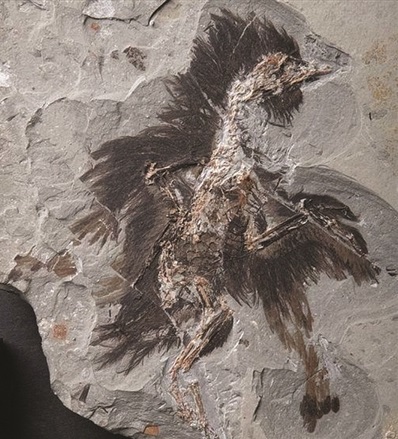Researchers have found tantalizing new evidence from fossilized feathers that sheds light on dinosaurian color. Their results have been published in the Proceedings of the National Academy of Science.

Image from Baidu.com
Feathers and feather-like epidermal structures are well documented in several groups of non-avian dinosaurs and basal birds. When they were first discovered, microbodies associated with feathers were first interpreted as microbes. However, more recent research has interpreted these round-to-elongated structures as remnant melanosomes, pigment-containing cells that would have determined the animal's color. As melanosomes and microbes overlap completely in size and shape, both hypotheses are equally plausible.
To resolve this question, paleontologists from theNanjing Institute of Geology and Palaeontology (NIGPAS), the Institute of Vertebrate Paleontology and Paleoanthropology (IVPP), Linyi University and North Carolina State University used multiple molecular and chemical methods to study the purported melanosomes in a 130 million-year-old Eoconfuciusornis specimen.
To confirm that the observed structures were melanosomes, the researchers used gold-labelled antibodies to study beta-keratin in the fossilized feathers of the crow-sized primitive bird.
"Multiple independent analyses of both microbodies and associated matrix recovered from the fossil feathers confirm that these microbodies are indeed melanosomes,” said study corresponding author Dr. Pan Yanhong from NIGPAS.
The results showed that these microbodies are found preserved deep in a dense cortex, consistent with modern feathers.
"This study represents a breakthrough in the study of ultrastructures of fossil feathers and has provided the methods to apply to the controversial issue of whether the microbodies in many feathered dinosaurs and early birds are really melanosomes, and sheds new light on molecular preservation within normally labile tissues preserved in ancient fossils,” said Professor Zhou Zhonghe from IVPP, a co-author of the paper. (Asian Scientist)

